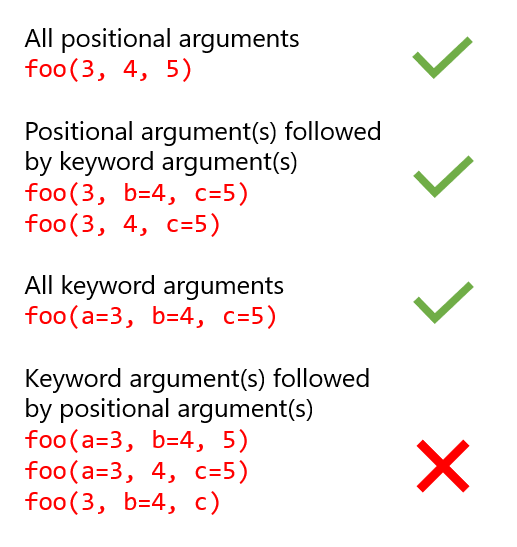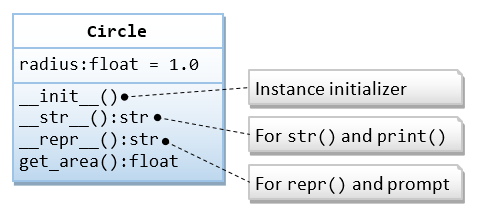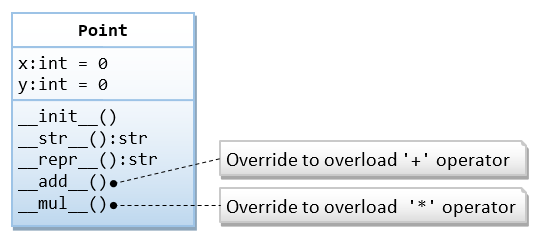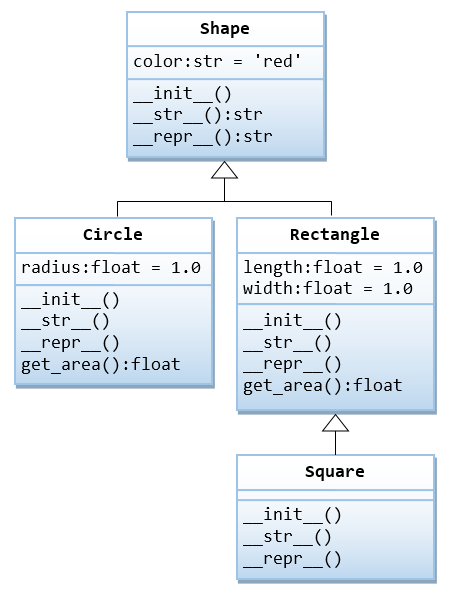Missing 1 Required Positional Argument: ‘Self’
One of the most common errors encountered by Python developers is the “missing 1 required positional argument: ‘self'” error. This error typically occurs when a method is called without passing the ‘self’ parameter, which is required for all instance methods in Python. In this article, we will explore the causes of this error and various ways to address it. Additionally, we will discuss different scenarios where this error can occur, and provide a comprehensive analysis of each.
Possible Causes of the Error
1. Omitting the ‘self’ Parameter in a Method Definition
The most common cause of this error is forgetting to include the ‘self’ parameter in the method definition. In Python, the first parameter of any instance method should always be ‘self’, which refers to the instance of the class. Omitting this parameter will result in the error message.
2. Incorrect Method Call Syntax
Another cause of this error can be an incorrect method call syntax. Double-check if you are correctly calling the method and passing the required ‘self’ parameter. It is crucial to ensure that you are calling the method on an instance of the class and not on the class itself.
3. Incorrect Class Declaration
If the class is not declared correctly, it can lead to the “missing 1 required positional argument: ‘self'” error. Make sure that you have declared the class properly, including the ‘self’ parameter in the method definitions.
4. Incorrect Inheritance or Subclassing
If the class is a subclass or inherits from another class, ensure that the superclass’s methods are called correctly, including the ‘self’ parameter. Failure to correctly inherit or subclass can result in missing required positional arguments.
5. Missing ‘self’ Parameter in Callback Functions
In certain cases, you may encounter this error when dealing with callback functions. If you are passing a method as a callback function and not including the ‘self’ parameter, you will encounter this error. Make sure to pass the ‘self’ parameter while using callback functions.
6. Confusion between Static and Instance Methods
Python has both static and instance methods. If you mistakenly call an instance method as a static method or vice versa, it can result in this error. Review your method definitions and function calls to ensure you are using the correct method type.
7. Problems with Method Overloading
Python does not support method overloading like some other programming languages. If you define multiple methods with the same name, but different parameters, Python will only consider the last defined method. This can confuse the interpreter and lead to the missing ‘self’ argument error.
8. Missing ‘self’ Parameter in Object Initialization
If the error occurs during object initialization, ensure that you are providing the ‘self’ parameter within the __init__ method. This method is responsible for initializing the object, and omitting the ‘self’ parameter will cause the error.
9. Addressing the Error by Providing the Required ‘self’ Argument
To resolve the missing ‘self’ argument error, you need to ensure that the ‘self’ parameter is provided in all method calls. Double-check your code and confirm that you are calling instance methods on instances of the class.
Frequently Asked Questions
Q: What does the error message “missing 1 required positional argument: ‘self'” mean?
A: This error message indicates that a method is being called without passing the required ‘self’ parameter. In Python, ‘self’ is used as the first parameter in instance methods to refer to the instance of the class.
Q: How can I fix the “missing 1 required positional argument: ‘self'” error?
A: To fix this error, make sure you include the ‘self’ parameter in the method definition and provide it while calling the method. Also, ensure that you are calling instance methods on instances of the class and not on the class itself.
Q: Can this error occur with static methods?
A: No, this error is specific to instance methods. Static methods do not require the ‘self’ parameter as they are not associated with any particular instance of the class.
Q: Are there any other similar error messages related to missing required positional arguments?
A: Yes, there are several similar error messages that can occur due to missing required positional arguments. Some examples include “TypeError form missing 1 required positional argument default,” “TypeError: __init__() missing 1 required positional argument scheme,” and “Takes 1 positional argument but 2 were given.”
Q: How common is the “missing 1 required positional argument: ‘self'” error?
A: This error is quite common, especially for developers new to Python or coming from programming languages that do not require the ‘self’ parameter. It is an essential concept in object-oriented programming with Python, and understanding it is crucial for writing correct and functional code.
In conclusion, the “missing 1 required positional argument: ‘self'” error is a common mistake that Python developers encounter. It is essential to understand the causes of this error and implement the necessary solutions to fix it. By paying attention to method definitions, method calls, class declarations, and inheritance, you can effectively address this error and ensure the smooth execution of your Python code.
Python :Typeerror: Missing 1 Required Positional Argument: ‘Self'(5Solution)
How To Fix Missing 1 Required Positional Argument In Python?
Python is a popular programming language known for its simplicity and readability. However, like any other programming language, it also has its fair share of errors and issues. One common error that Python developers often encounter is the “missing 1 required positional argument” error. This error occurs when a function is called without providing all the necessary arguments it expects. In this article, we will discuss this error in detail and provide solutions to fix it.
Understanding the Error:
To understand the “missing 1 required positional argument” error, let’s consider a simple example. Suppose we have a function called “multiply_numbers” that takes two arguments, num1 and num2, and multiplies them together. Here’s how the function definition would look like:
“`
def multiply_numbers(num1, num2):
return num1 * num2
“`
Now, let’s try to call this function with only one argument, as shown below:
“`
multiply_numbers(5)
“`
As a result, Python will raise a TypeError with the following message:
“`
TypeError: multiply_numbers() missing 1 required positional argument: ‘num2’
“`
This error message tells us that the function “multiply_numbers” is expecting two arguments, but only one argument was provided. To fix this error, we need to ensure that all the required arguments are passed to the function.
Fixing the Error:
To fix the “missing 1 required positional argument” error, we have a few options:
1. Provide the missing argument:
The most straightforward solution is to provide the missing argument when calling the function. In the previous example, we need to provide both num1 and num2 arguments to the “multiply_numbers” function to avoid the error. For instance:
“`
multiply_numbers(5, 10)
“`
By passing both arguments, the function will execute without any error.
2. Use default argument values:
In Python, we can assign default values to function arguments. This means that if an argument is not provided while calling the function, it will take on the default value. We can modify the “multiply_numbers” function to include default values for num1 and num2:
“`
def multiply_numbers(num1=1, num2=1):
return num1 * num2
“`
Now, if we call the function without arguments, it will use the default values:
“`
multiply_numbers()
“`
This approach ensures that even if an argument is missing, the function will still work correctly.
3. Modify the function signature:
Another way to fix the error is to modify the function signature to have optional arguments. This allows the function to be called with any number of arguments, and the logic inside the function handles the missing values accordingly. Here’s an example:
“`
def multiply_numbers(*args):
if len(args) == 2:
return args[0] * args[1]
else:
raise ValueError(“Two arguments are required.”)
# Now, we can call the function with any number of arguments:
multiply_numbers(5, 10) # Result: 50
multiply_numbers(5, 10, 20) # Raises ValueError
“`
With this modification, the function can accept any number of arguments while still ensuring that exactly two arguments are required for the desired functionality.
Frequently Asked Questions (FAQs):
Q1. Is the “missing 1 required positional argument” error specific to Python?
Answer: No, this error can occur in other programming languages as well. It is a common error when a function is called with fewer arguments than expected.
Q2. Can I have multiple required arguments in a function?
Answer: Yes, you can have multiple required arguments in a function. Just make sure to provide all the necessary arguments when calling the function.
Q3. Why would I want to use default argument values?
Answer: Default argument values allow you to provide a fallback value for an argument if the user does not explicitly pass one. This can make your code more flexible and reduces the chances of getting the “missing required positional argument” error.
Q4. Can I use default argument values and optional arguments together?
Answer: Yes, you can mix default argument values and optional arguments in Python functions. This provides even more flexibility when designing your functions.
Q5. Are there any other common errors related to function arguments?
Answer: Yes, there are other common errors like “TypeError: takes N positional arguments but M were given” or “TypeError: missing X required keyword-only arguments.” These errors occur when the number or type of arguments passed to a function does not match its definition.
In conclusion, the “missing 1 required positional argument” error in Python is a common mistake that can be easily fixed by providing all the necessary arguments when calling a function. Additionally, utilizing default argument values or modifying the function signature provides flexibility and can prevent future errors. By addressing this error and understanding the related FAQs, Python developers can write more robust and error-free code.
What Is Missing 1 Required Positional Argument Tag?
When working with programming languages and frameworks, it is not uncommon to encounter various errors and exceptions. One common error that developers often come across is the “missing 1 required positional argument” tag. In this article, we will explore what this error means, why it occurs, and how it can be resolved.
Understanding the error:
The error message “missing 1 required positional argument” is typically encountered when a function or method is called without providing all of its required parameters. In Python, for instance, functions can have both positional and keyword arguments. Positional arguments are mandatory and must be provided in a specific order, while keyword arguments have default values and can be omitted.
When a function has one or more mandatory positional arguments, calling it without providing all of them will trigger the “missing 1 required positional argument” error. This error message implies that the function expects additional parameters that have not been provided.
Why does this error occur?
This error usually occurs due to one of the following reasons:
1. Incorrect function call: The function may have been called with fewer arguments than required. It could be a simple mistake, such as forgetting to pass an argument while invoking the function.
2. Parameter mismatch: Another possible reason is the mismatch between the function definition and its usage. If the function definition has changed, but the function call has not been updated accordingly, it can result in missing positional arguments.
Resolving the error:
To resolve the “missing 1 required positional argument” error, follow these steps:
1. Check the function definition: Verify that the function definition matches the intended number and order of the parameters. Ensure that all mandatory positional arguments are correctly listed.
2. Review the function call: Cross-check the function call to confirm if all the required positional arguments have been provided. Ensure that the order of the arguments matches the function definition.
3. Provide the missing argument(s): If any positional arguments are missing, add them in the correct order when calling the function. Supply the necessary values so that the function can execute properly.
4. Consider using keyword arguments: If you frequently encounter issues with missing positional arguments, you can refactor your code to use keyword arguments. Keyword arguments make it easier to understand which argument corresponds to which parameter, and can help minimize errors related to missing arguments.
FAQs:
1. Q: Can this error occur in languages other than Python?
A: Yes, this error can occur in other programming languages as well. However, the specific wording of the error message may vary depending on the language or framework being used.
2. Q: What if my function has optional parameters?
A: If your function has optional parameters, you can either provide values for them or omit them during function invocation. Optional parameters do not trigger the “missing 1 required positional argument” error if they are not supplied.
3. Q: How can I prevent this error from happening in the first place?
A: To avoid this error, ensure that you carefully review the function signature and its usage. Properly document your functions, mentioning the required positional arguments, and make sure to provide all necessary arguments when calling the function.
4. Q: Are there any tools or IDEs that highlight missing positional arguments?
A: Yes, many integrated development environments (IDEs) provide code analysis features that can highlight potential errors like missing positional arguments. Tools like PyCharm, Visual Studio Code, and Eclipse can assist in identifying and rectifying such issues.
In conclusion, the “missing 1 required positional argument” error often arises due to an incorrect function call or a parameter mismatch. To resolve this error, it is crucial to review the function definition, check the function call for any missing positional arguments, and provide them accordingly. By following these steps and adopting best practices while programming, this error can be effectively resolved, resulting in more robust and bug-free code.
Keywords searched by users: missing 1 required positional argument: ‘self’ TypeError form missing 1 required positional argument default, TypeError: __init__() missing 1 required positional argument scheme, Updater __init__ missing 1 required positional argument update_queue, Flask __call__() missing 1 required positional argument start_response, Takes 1 positional argument but 2 were given, Get_object_or_404 missing 1 required positional argument klass, Result api_dispatcher dispatch args kwargs TypeError missing required positional argument, Missing 1 required positional argument Python function
Categories: Top 48 Missing 1 Required Positional Argument: ‘Self’
See more here: nhanvietluanvan.com
Typeerror Form Missing 1 Required Positional Argument Default
When programming in Python, it is common to encounter various types of errors. One such error is the TypeError, specifically the “missing 1 required positional argument: ‘default'” error. This error occurs when a function or method is called without providing all the necessary arguments it requires. In this article, we will delve into this error in depth, providing explanations, examples, and solutions to help you better understand and avoid encountering this error in your Python programs.
Understanding the Error Message
Before we dive into the specifics of the error, let’s dissect the error message itself. The error message usually includes two key components: “missing 1 required positional argument” and the name of the missing argument, which is often followed by a colon and further clarification.
The phrase “missing 1 required positional argument” indicates that the function or method is expecting a certain argument, but it was not provided when the function was called. The term “positional argument” refers to an argument that is passed based on its position in the function’s parameter list, rather than explicitly assigning a value to a specific parameter name. This distinction will become clearer as we explore examples.
The name of the missing argument helps identify the specific argument that was not passed, allowing us to troubleshoot and resolve the issue effectively.
Common Causes of the Error
1. Forgetting to pass an argument: The most common cause of this error is simply forgetting to pass a required argument when calling a function or method. This can happen when we overlook the function’s documentation or mistakenly assume that the function will work without certain arguments.
2. Incorrect order of arguments: Another common cause is passing arguments in the wrong order. Since positional arguments are determined by their position in the function’s parameter list, supplying arguments in the incorrect order can lead to this error. Double-checking the function’s expected argument order can help resolve this issue.
3. Incorrect argument name: In some cases, this error can occur when passing arguments using their parameter names instead of relying on their positional order. This is called keyword arguments. However, if a function has required positional arguments, they should be passed positionally rather than by name.
Examples of TypeError: missing 1 required positional argument: ‘default’
Let’s look at a few examples that illustrate this error:
Example 1: Simple function missing an argument
“`python
def greet(name):
return f”Hello, {name}!”
# Calling the greet function without providing the name argument
print(greet())
“`
Output:
“`
TypeError: greet() missing 1 required positional argument: ‘name’
“`
In this example, the greet() function expects a single argument called “name,” which is then used in the greeting. However, when the function is called without passing any arguments, it results in a TypeError with the message indicating that the “name” argument is missing.
Solutions and Strategies
To resolve this error, we need to ensure that all the required arguments are provided when calling the function. Here are a few strategies to tackle this error:
1. Check function documentation: Before using a function, thoroughly read its documentation, which typically includes details about the required arguments, their order, and any default values. This will help ensure that you are passing the correct arguments.
2. Verify argument order: Double-check the order of arguments when calling the function. Ensure that you are passing them in the correct sequence as defined in the function’s parameter list.
3. Review function signature: Examine the function signature (i.e., the declaration), paying attention to the required positional arguments. This will help identify the number and order of required arguments.
4. Use default values: If a function has default values for some of its arguments, you can omit those arguments when calling the function. The function will then use the default values if no other value is provided. However, be cautious, as not all functions have default values for their arguments.
5. Utilize keyword arguments: If you prefer using keyword arguments instead of positional arguments, ensure that the function allows for them. If a function is designed to only accept positional arguments, using keyword arguments may cause a TypeError. In such cases, switch to using the correct positional order.
FAQs
Q: Can I assign a default value to a positional argument?
A: Yes, you can assign a default value to a positional argument in Python. By assigning a default value to an argument in the function’s declaration, you make that argument optional, and it can be omitted when calling the function. However, it’s important to note that default values should be assigned to the last positional arguments in the parameter list to avoid confusion.
Q: What is the difference between a positional argument and a keyword argument?
A: Positional arguments are passed to a function based on their position in the parameters list, without explicitly indicating the parameter names. On the other hand, keyword arguments are explicitly passed by indicating the parameter names followed by the actual values. While positional arguments are determined by their position, keyword arguments are identified and assigned based on their parameter names.
Q: Why is it important to include all required arguments?
A: Functions are designed to perform specific tasks, and their logic relies on the provided arguments. Omitting required arguments can cause the function to behave incorrectly or crash due to missing inputs. Including all required arguments ensures that the function operates as intended.
Q: How can I prevent this error from occurring?
A: To prevent this error, it is crucial to understand a function’s documentation, including the required arguments and their order. Always double-check that you are passing all necessary arguments when calling a function, either through positional order or keyword arguments, and ensure the arguments match the defined parameters.
Conclusion
Being aware of the TypeError: missing 1 required positional argument: ‘default’ error and understanding its causes and solutions is fundamental for writing error-free Python code. Remember to carefully examine the function’s documentation, parameter list, and argument order to ensure all required arguments are passed correctly. By following these guidelines, you’ll be well-equipped to identify and resolve this error, saving valuable time and avoiding potential issues in your Python programs.
Typeerror: __Init__() Missing 1 Required Positional Argument Scheme
In the world of programming, error messages are nothing new. They can be frustrating and intimidating, especially for beginners. One such error message that often leaves developers scratching their heads is the “TypeError: __init__() missing 1 required positional argument: ‘scheme'”. In this article, we will dive into the details of this error message, its possible causes, and how to resolve it.
Understanding the Error Message:
When encountering the “TypeError: __init__() missing 1 required positional argument: ‘scheme'” error message, it indicates that you are calling or instantiating a class without providing the required argument ‘scheme’ in its constructor. In Python, the “__init__()” method is a special method called upon creating an instance of a class. It is used to initialize object attributes or perform any necessary setup operations.
Possible Causes:
There are a few possible causes for this error message. Let’s explore some of them:
1. Missing Argument: As the error message suggests, the most common cause is forgetting to pass the required argument ‘scheme’ when creating an instance of the class. Check your code and ensure that you are passing all the necessary arguments in the correct order.
2. Incorrect Spelling: Another source of this error can be a typographical mistake. Double-check the spelling of the required argument in both the class definition and the instantiation.
3. Incorrect Usage of Inheritance: If you are using inheritance and subclassing, the ‘scheme’ argument might have been declared in the superclass but omitted in the subclass. Ensure that all derived classes have the appropriate arguments in their constructors.
Resolving the Error:
To resolve the “TypeError: __init__() missing 1 required positional argument: ‘scheme'” error message, follow these steps:
1. Check Class Definition: Review the class definition and verify that the ‘__init__()’ method requires the ‘scheme’ argument. Ensure that the parameter is correctly spelled and included.
2. Verify Instantiation: Double-check the code where you are creating an instance of the class. Ensure that you are passing the ‘scheme’ argument in the correct order and spelled correctly.
3. Assign Default Value: If the ‘scheme’ argument is not meant to be mandatory, you can assign a default value to it in the ‘__init__()’ method. This way, if no value is provided during instantiation, the default value will be used.
4. Check Inheritance: If you are working with subclasses, confirm that all subclasses have the correct arguments in their constructors. Ensure that the superclass’s constructor properly handles any required ‘scheme’ argument.
FAQs:
Q: What does ‘scheme’ refer to in the error message?
A: ‘scheme’ is an argument that is expected and required by the class constructor. You need to provide a value for this argument when creating an instance of the class.
Q: Why am I getting this error even though I passed the ‘scheme’ argument?
A: Double-check the spelling and order of the arguments. If you are sure that you have passed the ‘scheme’ argument correctly, make sure there are no typographical errors or inconsistencies in the class definition.
Q: Can I have optional arguments in the constructor to avoid this error?
A: Yes, you can assign default values to the arguments in the ‘__init__()’ method to make them optional. This way, if an argument is not provided during instantiation, the default value will be used.
Q: Are there any solutions specific to inheritance-related issues?
A: When working with inheritance, ensure that all derived classes have the required ‘scheme’ argument in their constructors. Verify that the superclass handles this argument correctly to avoid any errors during instantiation.
Q: Are there any common mistakes that lead to this error?
A: One common mistake is forgetting to pass the ‘scheme’ argument altogether. Make sure to review your code and check for typographical errors in the argument’s spelling and order.
Conclusion:
The “TypeError: __init__() missing 1 required positional argument: ‘scheme'” error message can be puzzling, especially for beginners. However, by understanding its causes and following the provided solutions, you can quickly resolve this issue. Remember to check for missing arguments, typographical errors, and properly handle argument inheritance if present. Happy coding!
Updater __Init__ Missing 1 Required Positional Argument Update_Queue
In Python programming, initializing objects is a crucial step for smooth execution of programs. However, sometimes errors occur when a required positional argument is missing from the initialization method. One such error that programmers might encounter is the “Updater __init__ missing 1 required positional argument update_queue.” This article will delve into this error, exploring the causes, possible solutions, and providing some commonly asked questions and answers.
Understanding the Error:
The error message “Updater __init__ missing 1 required positional argument update_queue” indicates that a class named “Updater” is missing a necessary argument called “update_queue” in its initialization method (__init__). This error often arises when attempting to create an instance of the Updater class but failing to provide the required argument update_queue.
Causes of the Error:
The Updater class is typically used in the context of Python libraries like python-telegram-bot or UpdaterBot. When creating an instance of this class, the update_queue argument must be passed to the __init__ method.
The error occurs when a programmer mistakenly creates an instance of the Updater class without providing the update_queue argument, leading to the missing positional argument error message. This may be caused by a coding mistake, such as forgetting to include the argument or incorrectly naming it during object initialization.
Potential Solutions:
To resolve the “Updater __init__ missing 1 required positional argument update_queue” error, several potential solutions can be tried:
1. Check the Initialization: Double-check the code where the Updater object is created and ensure that the update_queue argument is included correctly. Verify that no typographical errors or incorrect argument names are present.
2. Import Correct Libraries: Ensure that the required libraries, such as python-telegram-bot or UpdaterBot, are imported correctly. A missing or outdated library could cause this error.
3. Update Libraries: If using a third-party library, check if any updates have been released. Sometimes, updating to the latest version of the library can resolve errors related to missing arguments.
4. Review Documentation and Examples: Refer to the official documentation of the library or package you are using. Check their examples and implementation details to ensure that you are properly initializing the Updater object with the required arguments.
5. Seek Help from the Community: If the error persists, consider seeking assistance from the programming community. Online forums and communities related to the library or package you are using can often provide valuable insights and potential solutions.
FAQs:
Q1. What is a positional argument in Python?
A positional argument is a parameter passed to a function or method based on its position, as opposed to named arguments. For example, in the function add(a, b), “a” and “b” are positional arguments.
Q2. Why do positional arguments matter in class initialization?
Positional arguments are crucial during class initialization because they provide necessary information for setting up the object. Class constructors (__init__ methods) use positional arguments to receive data, perform initialization tasks, and ensure the object is properly configured.
Q3. How can I fix the “Updater __init__ missing 1 required positional argument update_queue” error?
Ensure that you are correctly providing the update_queue argument when creating an instance of the Updater class. Double-check the code, update libraries, and refer to the documentation or community for guidance if necessary.
Q4. What are some common mistakes that lead to this error?
Common mistakes include omitting the update_queue argument during initialization, incorrectly naming it, or passing the wrong object or data type to the argument.
Q5. Are there any alternative methods to fix the error?
The error can be fixed by providing the missing update_queue argument correctly. However, alternative approaches might involve modifying the code logic, using default arguments, or redesigning the class if applicable.
In summary, encountering the “Updater __init__ missing 1 required positional argument update_queue” error indicates that a necessary argument is missing during the initialization of an Updater object. Carefully reviewing the initialization code, importing correct libraries, checking for library updates, and referring to documentation can help resolve this issue. If needed, the programming community can be an excellent resource for troubleshooting this error.
Images related to the topic missing 1 required positional argument: ‘self’

Found 15 images related to missing 1 required positional argument: ‘self’ theme








































Article link: missing 1 required positional argument: ‘self’.
Learn more about the topic missing 1 required positional argument: ‘self’.
- TypeError: Missing 1 required positional argument: ‘self’
- TypeError: missing 1 required positional argument: ‘self’ (Fixed)
- TypeError: __init__() missing 1 required positional argument
- How to resolve ‘missing 1 required positional argument’ (Python …
- Python missing 1 required positional argument: ‘self’ Solution
- TypeError: missing 1 required positional argument: ‘self’
- Python missing 1 required positional argument: ‘self’ Solution
- TypeError: missing 1 required positional argument: ‘self’
- TypeError: Missing 1 required positional argument … – W3docs
- Missing 1 Required Positional Argument: ‘Self’: Solved
See more: https://nhanvietluanvan.com/luat-hoc